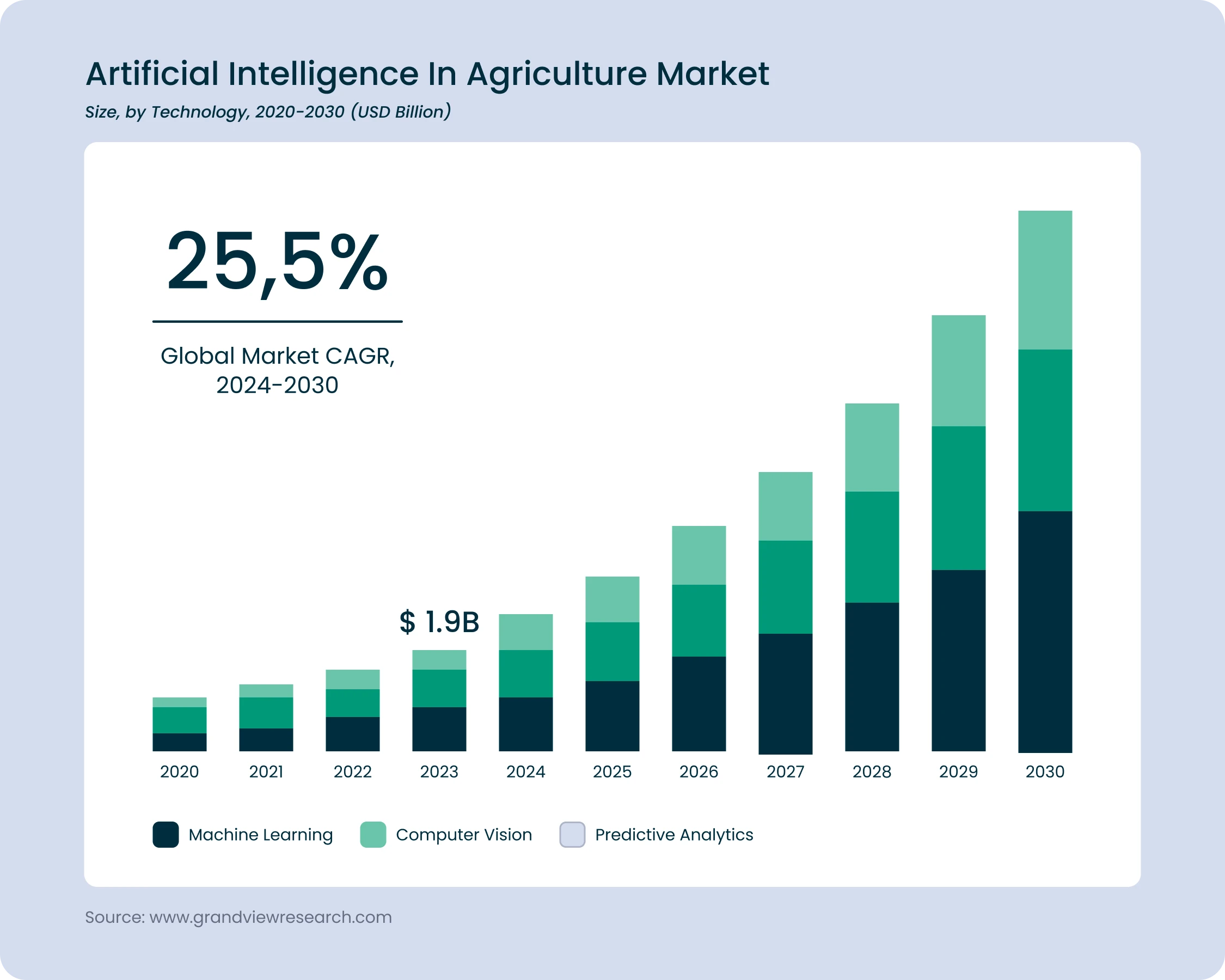Picture this: Your procurement team is overwhelmed with paperwork, always waiting on approvals, manually updating spreadsheets, and having a hard time keeping up with supplier communication.
Orders are running late, budgets are out of control, and you’re missing chances to save money. Sound familiar? These are common issues for businesses managing procurement the old-fashioned way.

But what if you could simplify everything, cut down on mistakes, and give your team more time for bigger decisions? As Amber Rudd said, “Automation is driving the decline of banal and repetitive tasks.” This is exactly where procurement automation software steps in.
By robotizing those routine processes, procurement automation can help you speed up workflows, get real-time insights, improve accuracy, and build better relationships with suppliers. It also frees your team to focus on strategic tasks that actually grow the business.
In this article, we’ll show you how automated procurement systems can solve the pain points that slow your business down and help you grow. Ready to make your procurement operations more efficient? Let’s get started.
What Is Procurement Process Automation?
To start formally, procurement automation involves using software to simplify tasks like approvals, accounting, and payments. It helps teams manage the supply chain more efficiently from order to invoice. The process works by turning invoice data into digital records and storing it all in one central system.
But if to dive deeper, we would say that automated procurement systems cut costs related to lost documents, miscommunication, and error correction, while automated processes simply take over the repetitive work, they don’t make your procurement team unnecessary.
Why does procurement process robotisation matter? With intelligent automation, you can do more than just eliminate repetitive tasks, you can improve supplier management and meet more complex procurement needs. As you probably know, the impact of procurement automation software is more pronounced, especially when it comes to digitizing data and creating a centralized transaction history.
Why Do You Need Automated Procurement Systems?
“Why did a procurement manager bring a ladder? – To reach new heights in savings”, says a joke. Luckily, you don’t need a ladder because you can do this with an automated procurement system.
Procurement automation is more than just reducing manual work – it’s a transformative journey that will digitalize many tasks and operations. As you evolve from automating your company’s procurement process, you can fuel your growth and give your team members more time and space for handling more important tasks.
But see how you can make this leap with automated processes.
Fewer errors and delays
Imagine never having to worry about misplaced invoices or duplicate payments. By automating invoice processing, you eliminate manual data entry and set up consistent workflows for every purchase. This frees up your procurement team to focus on strategic tasks instead of chasing paperwork.
Automated procurement systems can decrease errors in purchase orders. No more costly errors or delays from human mistakes, just a smooth, accurate process that keeps everything on track and helps your procurement team work smarter, not harder.
Staying ahead of risks
Procurement process automation brings transparency to your operations, ensuring every supplier is evaluated to the same standards. With automated processes and strategic sourcing with reliable vendors, you reduce the chances of fraud. Plus, tracking performance over time helps you stay ahead of potential risks.
Speedy processing
Procurement automation software makes comparing vendor prices quick and accurate, while approvals flow smoothly across departments. From ordering and reconciliation to payment and spend reporting, procurement automation software speeds up every step, cutting down cycle times and lightening the load on accounts payable.
Lower costs
With automated procurement software your team can handle more without adding extra hands. Companies can save up to 30% on procurement costs through automation.
Reducing manual tasks means fewer errors and lower costs. As your business grows, the system scales with you, enhancing communication between buyers and suppliers for more efficient, cost-effective purchasing.
So, as you can see, there’s a strong case for automating your procurement operations. But how do you decide which processes to digitize? I’ll cover that further below.
Top 6 Procurement Processes You Should Automate
Now that you understand the benefits of procurement process automation, it’s time to identify which processes you should automate. While there are many options available, it’s important to focus on operations that align with your current needs.
Here’s a list of procurement processes we recommend automating:
1. Purchase requisition
Purchase requisitions often get stuck in a complex approval process, wasting time and slowing down your operations. Procurement automation can streamline this process, speeding up approvals and eliminating unnecessary steps. This allows your purchasing team to focus on higher-value tasks and accomplish more in less time.
According to the latest report, automating purchase requisitions can significantly reduce approval times. That’s why we recommend implementing procurement automation. It not only saves time but also improves accuracy, accountability, and overall efficiency in your purchasing workflow.
2. Purchase order
A recent survey found that about 43% of organizations struggle with their purchase order practices, even with a formal system in place. Automating the purchase order cycle can boost productivity, improve efficiency, and save costs.
3. Invoice management
Manual invoice management can lead to lost or poorly managed purchase orders, submission delays, and confusion over spending. This often results in delayed payments and compliance issues. Going digital makes invoice management smooth and efficient. For instance, tools like Kissflow can automate invoice approvals by matching invoices with purchase orders and receipts quickly.
4. Vendor management
A lack of transparency can strain vendor relationships, but automated procurement systems help teams streamline vendor selection and quickly resolve issues, fostering stronger partnerships.
Additionally, automation can cut time spent on vendor management tasks, significantly boosting efficiency. By adopting automation, you not only save time but also build more reliable and productive vendor relationships for long-term success.
5. Contract management
Without a good system, contracts often get mixed up in filing cabinets or local drives, making them hard to find. Automating contract management gives you easy access to all documents in one place. You’ll also get reminders about contract expirations, so you have time to renew or renegotiate. Finally, automation can reduce the time spent on contract review and approval.
6. Sourcing
Sourcing involves finding and selecting suppliers for your needs, which can be a tedious and manual process. Automation simplifies this by providing a centralized platform to communicate, compare bids, and store documents.
Automation can reduce the time spent on sourcing tasks. You’ll also gain insights into pricing and delivery times, making it easier to choose the best supplier.
Contact us, and we’ll provide personalized guidance on automating your procurement operations.
Role of AI in Automated Procurement Systems
It’s no secret that AI is changing procurement for the better. Artificial intelligence makes processes smarter, faster, and more efficient. Indeed, AI can speed up procurement transactions and reduce errors, freeing your team to focus on strategic work. With procurement automation, AI helps you streamline approvals, track spending in real time, and make data-driven decisions that improve supplier relationships and overall business performance.
Being powered by advanced algorithms and machine learning, AI can analyze large amounts of data, like past purchases and market trends. This gives organizations valuable insights for better decision-making.
With AI-powered predictive analytics, companies can forecast demand and spot price changes. This helps them choose the best suppliers, negotiate contracts, and manage purchasing categories more effectively.
AI implementation also simplifies contract management. It automates tasks like drafting, negotiating, and renewing contracts, ensuring compliance with legal requirements while securing the best terms.
Moreover, AI helps manage supply chain risks. It analyzes factors like supplier health and global events, allowing organizations to foresee disruptions and act proactively. AI-powered supply can reduce logistics costs by up to 15%.
Generative AI has become a powerful tool for procurement professionals. It can quickly handle time-consuming tasks. In just minutes or seconds, it can research suppliers, draft contract summaries, summarize trends, generate communications, review supplier performance, and extract important information from documents.
As Generative AI continues to improve, it will further streamline procurement processes. This transformation will create a more efficient and cost-effective automated procurement system.
Best Practices for Procurement Automation
Even though AI is changing industries everywhere, many businesses are still dealing with outdated, manual procurement processes. Sound familiar? If so, keep reading!
Here are some tips on choosing an automated procurement system that fits your needs and outlines the best practices for building efficient workflows.
Identify key processes for automation
Implementing procurement automation without a plan is like going on a road trip without a GPS. Sure, you’ll get there, but it’ll take longer and be more frustrating. It’s important to know that not every process should be automated. So, here are the most commonly automated tasks:
Tasks that are repetitive, slow, and prone to mistakes are ideal for procurement process automation. 37% of procurement teams want to spend less time on routine tasks to focus on strategic activities. The most commonly automated tasks include data entry, file management, CRM, and inventory management.
Some procurement tasks still need a human touch, like strategic decisions and interactions. Successful automation means strategically identifying which processes to robotize and which to keep in human hands.
Choose the right procurement automation tool
Picking the right automation tool isn’t just about choosing the top software. Start by evaluating your current procurement setup – look at your workflows, pain points, and challenges.
With technology advancing rapidly, AI-powered tools for procurement are becoming a top choice for many businesses. Here is some top AI-based automated procurement systems:
- GEP SMART: Offers a full suite for procurement, including spend analysis, sourcing, contract, and supplier management. AI helps provide insights and streamline processes.
- Coupa: Known for being user-friendly, Coupa supports procurement process automation, invoicing, and expense management, using AI to optimize spending and boost compliance.
- Jaggaer: This platform provides end-to-end procurement with advanced analytics and AI-driven insights for better decision-making and efficiency.
- Ivalua: Covers the entire procurement process, from sourcing to payment, using AI to enhance supplier management and contract compliance.
- Zycus: Offers tools like spend analysis, e-sourcing, and contract management, with AI to automate routine tasks and deliver useful insights.
Remember, the right tool should fit your unique procurement needs. If you need specific features, explore other solutions that align better.
Design your automation workflows
After choosing an automated procurement system, the next step is to design clear workflows. While many business leaders agree that analyzing procurement processes beforehand is helpful, surprisingly, some still are skipping this crucial step. Start by mapping out each process stage, like purchase orders, supplier selection, invoicing, and contract management.
Once you have these workflows, test them to catch any errors and fix bottlenecks before implementing full procurement automation. This way, you’ll be setting your procurement up for a smooth, efficient, and successful transformation.
Automate Procurement with Forbytes
Want to make procurement easier? With Forbytes, automating procurement has never been easier. With Forbytes, procurement automation has never been simpler. From speeding up approvals and reducing errors to gaining real-time insights and improving supplier relationships, our solutions streamline your entire purchasing process.
Whether you’re looking for a custom solution or want to integrate existing tools, our team is here to create a strategy that fits your unique needs. Imagine the efficiency and control you’ll gain by automating repetitive tasks and optimizing supply chain management – all tailored just for you.
If you need to build efficient procurement workflows, reach out to the Forbytes team. We’ll tailor a roadmap specifically for your needs.









